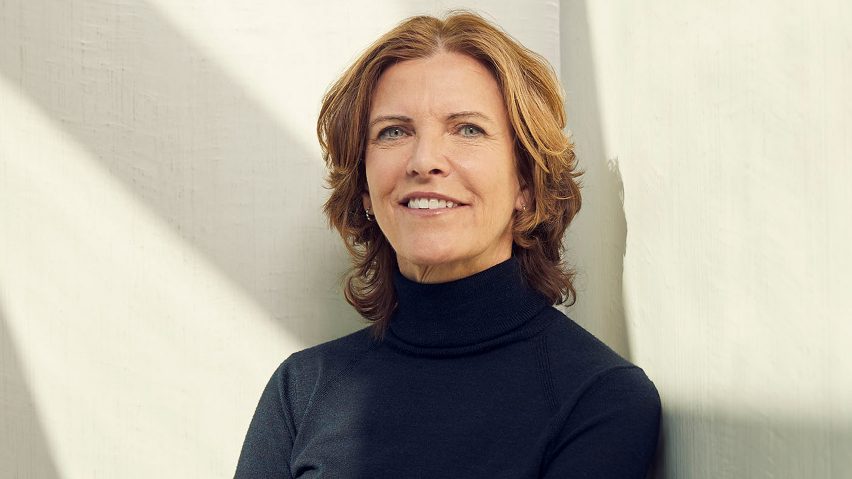People working in the built environment should prioritise the reuse of existing buildings and aim to increase the sustainability of concrete, said American architect Jeanne Gang.
Speaking on the occasion of the opening of the Gilder Center in New York, the founder of Chicago-based Studio Gang told Dezeen that reusing buildings is important if our built environment is to meet the goals of the Paris Climate Accords.
"A lot of my research and teaching at the GSD Harvard is about reusing buildings to reduce the amount of carbon that we're emitting," Gang told Dezeen.
"I think it's really important to start reimagining how we reuse buildings, how they can still have a new life but make use of everything as much as possible that's there – such as the foundations, walls – that we can use."
The comments came after the completion of two high-profile projects by Studio Gang in the last weeks, the Gilder Center at the American Museum of Natural History and the Little Rock Museum of Fine Art.
Both structures feature organic-like additions to historical collections of buildings, uniting preexisting buildings while adding contemporary aesthetics and improved circulation for the design.
Emotional side of climate change
The Gilder Center achieves this while still maintaining a distinct, organic appearance. Gang said that the building's form could help provoke an emotional connection to nature.
"We have to address climate change both on the rational side but also the emotional side," she said.
"How do we get people to care about nature, fall in love with nature again and want to care for it and advocate on behalf of all the living things on our planet? That's why art is very important, and architecture too."
The shift towards more organic forms aligns with changing attitudes towards architecture in New York City, according to Gang, who said that the city has "really upped its game in architecture since the 1990s" and is a "place that is very progressive and enlightened".
Beyond the formal properties of organic architecture and the focus on reuse, the architect also commented on the need to push forward new, more sustainable materials.
She noted the potential for biomaterials such as wood, mentioning a structure planned for Harvard made with mass timber – but also said that she has been following the innovations in more sustainable concrete.
Innovative concrete technologies important
"The thing about concrete is, it's possible to reduce the emissions of concrete based on the mix. So that's where the exciting discoveries that are happening right now," she said.
"It's something that's very practical and very useful, probably more useful than trying to do the building out of, at this point in time, bio-based materials," she added.
"But having said that, I am really interested in bio-based materials, such as wood, especially, but others as well."
She also added that these materials are the "next frontier" but that we need to be critical about how they are being "produced and extracted".
Gang, who won Le Prix Charlotte Perriand prize last year, has a number of projects in the works, including the United States' "first carbon-positive hotel" in Denver.

